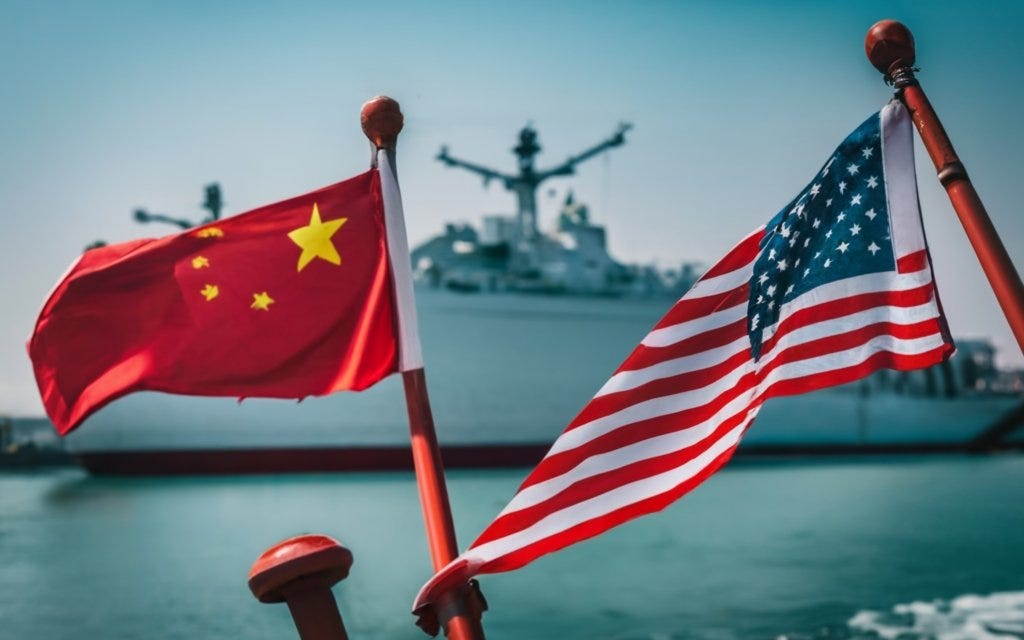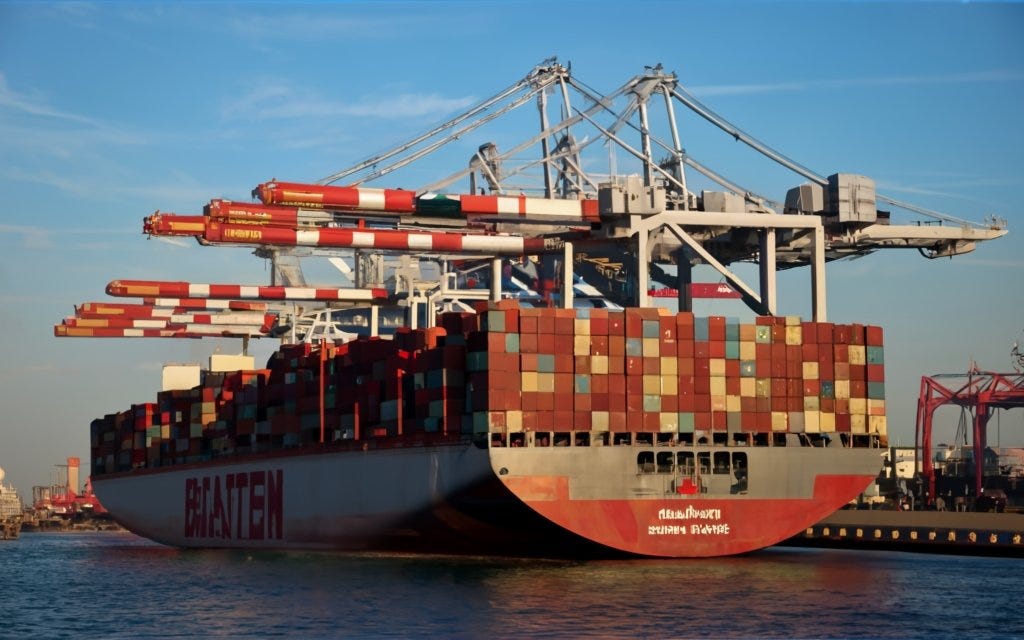Shipping from China to the USA Just Got Easier
Shipping from China to the USA is a common and lucrative business activity for many companies and individuals. However, it can also be a complex and challenging process that requires careful planning, coordination, and execution. In this article, we will explore the logistics of shipping from China to the USA, the advantages of streamlined shipping, the challenges of shipping from China to the USA, the streamlined shipping options and methods, the criteria for choosing the right shipping provider, the customs clearance and regulations, the tracking and monitoring of shipments, the cost considerations and budgeting, and some streamlined shipping success stories.
Understanding the logistics of shipping from China to the USA
Shipping from China to the USA involves several steps and factors that affect the efficiency, speed, and cost of the process. Some of the main aspects of the logistics are:
The origin and destination of the shipment: The location of the supplier or manufacturer in China and the buyer or receiver in the USA determines the distance, the transportation modes, the transit time, and the shipping costs of the shipment. For example, shipping from Shanghai to Los Angeles is different from shipping from Beijing to New York.
The type and quantity of the goods: The nature, size, weight, and value of the goods influence the packaging, labeling, documentation, and insurance requirements of the shipment. For example, shipping fragile, hazardous, or perishable goods requires special handling and care.
The shipping method: The shipping method refers to the mode of transportation used to move the goods from China to the USA. There are three main shipping methods: air freight, sea freight, and rail freight. Each method has its own advantages and disadvantages in terms of speed, cost, reliability, and environmental impact. For example, air freight is the fastest but also the most expensive and carbon-intensive method, while sea freight is the cheapest but also the slowest and most prone to delays and damages.
The shipping terms: The shipping terms, also known as Incoterms, are the rules that define the responsibilities and liabilities of the seller and the buyer in the shipping process. There are different types of Incoterms, such as EXW (Ex Works), FOB (Free On Board), CIF (Cost, Insurance, and Freight), and DDP (Delivered Duty Paid). Each Incoterm specifies who pays for the transportation, the insurance, the customs duties, and the taxes, and who bears the risk of loss or damage of the goods. For example, under EXW, the buyer pays for everything and assumes all the risks, while under DDP, the seller pays for everything and assumes all the risks.
The shipping documents: The shipping documents are the essential paperwork that accompanies the shipment and proves its legality, ownership, and compliance. Some of the common shipping documents are the commercial invoice, the packing list, the bill of lading, the certificate of origin, and the customs declaration. These documents are required for the clearance, inspection, and taxation of the goods by the customs authorities of both China and the USA.
Advantages of streamlined shipping
Streamlined shipping is the process of optimizing and simplifying the logistics of shipping from China to the USA. Streamlined shipping can offer several benefits for both the seller and the buyer, such as:
Reduced shipping costs: Streamlined shipping can help reduce the shipping costs by choosing the most cost-effective shipping method, negotiating the best shipping rates, consolidating the shipments, and avoiding unnecessary fees and charges.
Faster shipping time: Streamlined shipping can help speed up the shipping time by selecting the fastest shipping route, avoiding congestion and delays, and clearing the customs quickly and smoothly.
Improved shipping quality: Streamlined shipping can help improve the shipping quality by ensuring the proper packaging, labeling, and documentation of the goods, protecting the goods from damage and theft, and tracking and monitoring the shipment status and location.
Enhanced customer satisfaction: Streamlined shipping can help enhance customer satisfaction by meeting the customer expectations, delivering the goods on time and in good condition, and providing excellent customer service and support.
Challenges of shipping from China to the USA
Shipping from China to the USA can also pose some challenges and difficulties that need to be overcome and resolved. Some of the common challenges are:
Language and cultural barriers: Shipping from China to the USA involves dealing with different languages and cultures, which can cause misunderstandings, miscommunications, and conflicts. For example, the Chinese and the American business etiquette, negotiation styles, and legal systems are very different and can lead to confusion and disputes.
Regulatory and legal issues: Shipping from China to the USA involves complying with the rules and regulations of both countries, which can be complex, strict, and dynamic. For example, the Chinese and the American customs policies, tariffs, and trade agreements are constantly changing and can affect the shipping process and costs.
Market and competitive pressures: Shipping from China to the USA involves facing the market and competitive pressures of both countries, which can be intense, volatile, and unpredictable. For example, the Chinese and the American consumer demands, preferences, and trends are constantly evolving and can affect the shipping demand and supply.
Environmental and social concerns: Shipping from China to the USA involves addressing the environmental and social concerns of both countries, which can be significant, diverse, and influential. For example, the Chinese and the American environmental standards, carbon emissions, and social responsibility are increasingly important and can affect the shipping reputation and performance.
Streamlined shipping options and methods
To overcome the challenges and achieve the advantages of shipping from China to the USA, there are various options and methods that can be used to streamline the shipping process. Some of the main options and methods are:
Using a freight forwarder: A freight forwarder is a company that acts as an intermediary between the seller and the buyer and handles the logistics of shipping from China to the USA. A freight forwarder can offer several services, such as booking the transportation, arranging the documentation, clearing the customs, and delivering the goods. A freight forwarder can also provide advice, guidance, and solutions for the shipping issues and problems. Using a freight forwarder can help save time, money, and hassle, as well as ensure the quality and safety of the shipment.
Using a fulfillment service: A fulfillment service is a company that stores, packs, and ships the goods on behalf of the seller. A fulfillment service can offer several benefits, such as reducing the inventory costs, increasing the delivery speed, and improving the customer experience. Using a fulfillment service can help eliminate the need for the seller to manage the warehousing, packaging, and shipping of the goods, and allow the seller to focus on the core business activities.
Using a dropshipping service: A dropshipping service is a company that sources, supplies, and ships the goods directly to the buyer, without the seller having to handle or own the goods. A dropshipping service can offer several advantages, such as lowering the startup costs, expanding the product range, and reducing the operational risks. Using a dropshipping service can help the seller to start and run an online business without having to deal with the inventory, logistics, and fulfillment of the goods.
Using a shipping platform: A shipping platform is a website or an app that connects the seller and the buyer with the shipping providers and offers various features and functions to facilitate the shipping process. A shipping platform can offer several benefits, such as comparing the shipping rates, choosing the shipping methods, tracking the shipping status, and managing the shipping orders. Using a shipping platform can help the seller and the buyer to access and control the shipping information and options, and to optimize and simplify the shipping process.
Choosing the right shipping provider
One of the most important decisions in shipping from China to the USA is choosing the right shipping provider. The shipping provider is the company that transports the goods from China to the USA, such as an airline, a shipping line, or a railway company. Choosing the right shipping provider can have a significant impact on the shipping cost, time, quality, and reliability. Therefore, it is essential to consider the following criteria when choosing the right shipping provider:
The shipping method: The shipping method is the mode of transportation used to ship the goods from China to the USA, such as air freight, sea freight, or rail freight. The shipping method should be chosen based on the type, quantity, value, and urgency of the goods, as well as the budget and preference of the seller and the buyer. For example, air freight is suitable for small, light, valuable, and urgent goods, while sea freight is suitable for large, heavy, low-value, and less time-sensitive goods.
The shipping rate: The shipping rate is the price charged by the shipping provider to ship the goods from China to the USA. The shipping rate should be compared and negotiated among different shipping providers, as well as checked for any hidden or additional fees and charges. The shipping rate should also be balanced with the shipping quality and reliability, as the cheapest rate may not always be the best option. For example, a low shipping rate may come with a long transit time, a high risk of damage or loss, or a poor customer service.
The shipping reputation: The shipping reputation is the image and impression of the shipping provider in the market and among the customers. The shipping reputation should be evaluated and verified based on the feedback, reviews, ratings, and testimonials of the previous and current customers, as well as the accreditation, certification, and recognition of the industry and the authorities. The shipping reputation should also be consistent and trustworthy, as the reputation may not always reflect the reality. For example, a high shipping reputation may be based on a limited or biased sample, a manipulated or outdated data, or a fraudulent or deceptive practice.
Customs clearance and regulations
Another crucial aspect of shipping from China to the USA is the customs clearance and regulations. The customs clearance and regulations are the procedures and rules and requirements that govern the import and export of goods between China and the USA. The customs clearance and regulations are enforced by the customs authorities of both countries, such as the General Administration of Customs of China (GACC) and the U.S. Customs and Border Protection (CBP). The customs clearance and regulations aim to ensure the legality, safety, and compliance of the goods, as well as to collect the duties, taxes, and fees. The customs clearance and regulations can vary depending on the type, quantity, value, and origin of the goods, as well as the shipping terms and methods. Therefore, it is essential to follow the steps and tips below when dealing with the customs clearance and regulations:
Prepare the shipping documents: The shipping documents are the essential paperwork that accompanies the shipment and proves its legality, ownership, and compliance. Some of the common shipping documents are the commercial invoice, the packing list, the bill of lading, the certificate of origin, and the customs declaration. These documents are required for the clearance, inspection, and taxation of the goods by the customs authorities of both China and the USA. Therefore, it is important to prepare the shipping documents accurately, completely, and timely, and to provide them to the shipping provider, the freight forwarder, and the customs broker (if applicable).
Pay the customs duties and taxes: The customs duties and taxes are the fees and charges levied by the customs authorities of both China and the USA on the import and export of goods. The customs duties and taxes are calculated based on the tariff classification, the valuation, and the origin of the goods, as well as the shipping terms and methods. The customs duties and taxes are usually paid by the seller or the buyer, depending on the Incoterms. Therefore, it is important to know the customs duties and taxes applicable to the goods, and to pay them in full and on time, to avoid any penalties, fines, or delays.
Comply with the customs regulations: The customs regulations are the rules and restrictions that apply to the import and export of goods between China and the USA. The customs regulations can include the licensing, the certification, the inspection, the quarantine, the prohibition, and the restriction of certain goods. The customs regulations can also vary depending on the type, quantity, value, and origin of the goods, as well as the shipping terms and methods. Therefore, it is important to research and understand the customs regulations relevant to the goods, and to comply with them strictly and diligently, to avoid any confiscation, seizure, or rejection of the goods.
Tracking and monitoring shipments
Another important aspect of shipping from China to the USA is the tracking and monitoring of shipments. The tracking and monitoring of shipments are the processes and methods of checking and updating the status and location of the shipment during the shipping process. The tracking and monitoring of shipments can offer several benefits, such as:
Improving the visibility and transparency of the shipping process: The tracking and monitoring of shipments can help the seller and the buyer to see and know the progress and condition of the shipment, as well as to identify and resolve any issues or problems that may arise during the shipping process.
Enhancing the communication and coordination of the shipping parties: The tracking and monitoring of shipments can help the seller and the buyer to communicate and coordinate with the shipping provider, the freight forwarder, the customs broker, and the customs authorities, as well as to provide and receive the necessary information and documents for the shipping process.
Increasing the efficiency and reliability of the shipping process: The tracking and monitoring of shipments can help the seller and the buyer to optimize and streamline the shipping process, as well as to ensure the quality and safety of the shipment.
There are various options and methods that can be used to track and monitor the shipments, such as:
Using the tracking number: The tracking number is a unique code that is assigned to the shipment by the shipping provider, the freight forwarder, or the customs broker. The tracking number can be used to track and monitor the shipment status and location online, through the website or the app of the shipping provider, the freight forwarder, or the customs broker. The tracking number can also be used to track and monitor the shipment status and location offline, through the phone or the email of the shipping provider, the freight forwarder, or the customs broker.
Using the GPS device: The GPS device is a gadget that is attached to the shipment and uses the global positioning system (GPS) to track and monitor the shipment status and location in real time. The GPS device can offer more accurate and detailed information about the shipment status and location, as well as the temperature, the humidity, the vibration, and the shock of the shipment. The GPS device can also offer more security and protection for the shipment, as it can alert the seller and the buyer in case of any deviation, damage, or theft of the shipment.
Using the blockchain technology: The blockchain technology is a system that uses a distributed ledger and a cryptographic protocol to track and monitor the shipment status and location in a secure, transparent, and immutable way. The blockchain technology can offer more trust and accountability for the shipment, as it can record and verify the transactions and the events of the shipping process, as well as the identity and the authority of the shipping parties. The blockchain technology can also offer more efficiency and scalability for the shipment, as it can automate and streamline the shipping process, as well as reduce the paperwork and the intermediaries.
Cost considerations and budgeting
Another essential aspect of shipping from China to the USA is the cost considerations and budgeting. The cost considerations and budgeting are the processes and methods of estimating and managing the expenses and the revenues of the shipping process. The cost considerations and budgeting can help the seller and the buyer to achieve the profitability and the sustainability of the shipping process, as well as to avoid any financial risks and losses. The cost considerations and budgeting can include the following factors:
The shipping costs: The shipping costs are the fees and charges that are incurred by the seller and the buyer for the transportation, the insurance, the customs duties and taxes, and the other services and activities of the shipping process. The shipping costs can vary depending on the type, quantity, value, and origin of the goods, as well as the shipping terms and methods. Therefore, it is important to calculate and compare the shipping costs among different shipping options and methods, and to negotiate and optimize the shipping costs with the shipping provider, the freight forwarder, and the customs broker.
The shipping revenues: The shipping revenues are the income and the profits that are generated by the seller and the buyer from the sale and the purchase of the goods. The shipping revenues can depend on the market demand and supply, the customer preference and satisfaction, the product quality and differentiation, and the pricing strategy and policy. Therefore, it is important to research and analyze the market and the customer, and to design and implement a competitive and attractive pricing strategy and policy.
The shipping budget: The shipping budget is the plan and the allocation of the shipping costs and the shipping revenues for the shipping process. The shipping budget should be realistic, flexible, and balanced, and should reflect the goals and the expectations of the seller and the buyer. Therefore, it is important to prepare and update the shipping budget regularly, and to monitor and control the shipping budget performance and variance.
Streamlined shipping success stories
To illustrate the benefits and the challenges of shipping from China to the USA, and the options and the methods of streamlined shipping, here are some examples of streamlined shipping success stories:
Alibaba: Alibaba is a Chinese e-commerce giant that connects millions of sellers and buyers around the world, including the USA. Alibaba uses a variety of streamlined shipping options and methods, such as freight forwarders, fulfillment services, dropshipping services, and shipping platforms, to facilitate and optimize the shipping process. Alibaba also offers various features and functions, such as trade assurance, escrow service, online dispute resolution, and global sourcing, to enhance the shipping quality and reliability.
Amazon: Amazon is an American e-commerce giant that sells and delivers millions of products around the world, including China. Amazon uses a sophisticated and efficient streamlined shipping system, known as Fulfillment by Amazon (FBA), to handle and manage the shipping process. FBA allows the sellers to store, pack, and ship their products in Amazon’s warehouses and distribution centers, and allows the buyers to enjoy the fast and free shipping, as well as the excellent customer service and support.
Tesla: Tesla is an American electric vehicle and clean energy company that produces and sells its products around the world, including China. Tesla uses a innovative and sustainable streamlined shipping method, known as rail freight, to transport its vehicles from China to the USA. Rail freight is a mode of transportation that uses trains to move the goods from China to the USA, via the Trans-Siberian Railway and the Bering Strait. Rail freight is faster, cheaper, and greener than sea freight, and can reduce the shipping time from 40 days to 20 days, and the shipping cost from $2,500 to $2,000 per vehicle.









Comments
Post a Comment